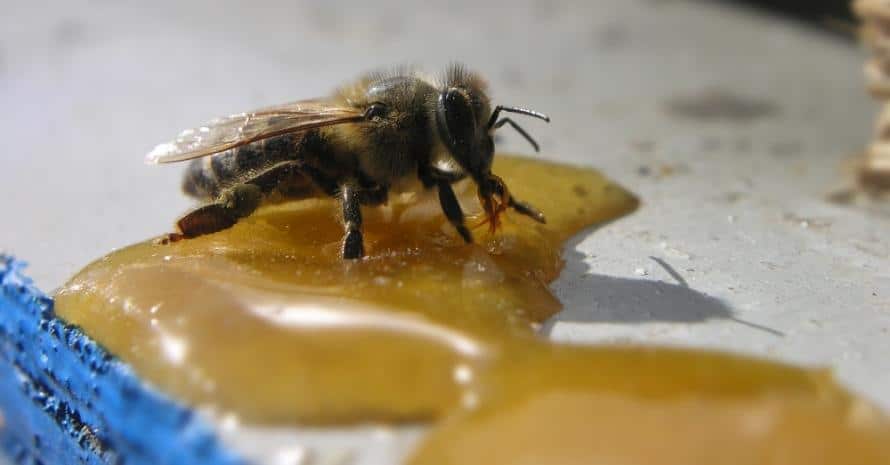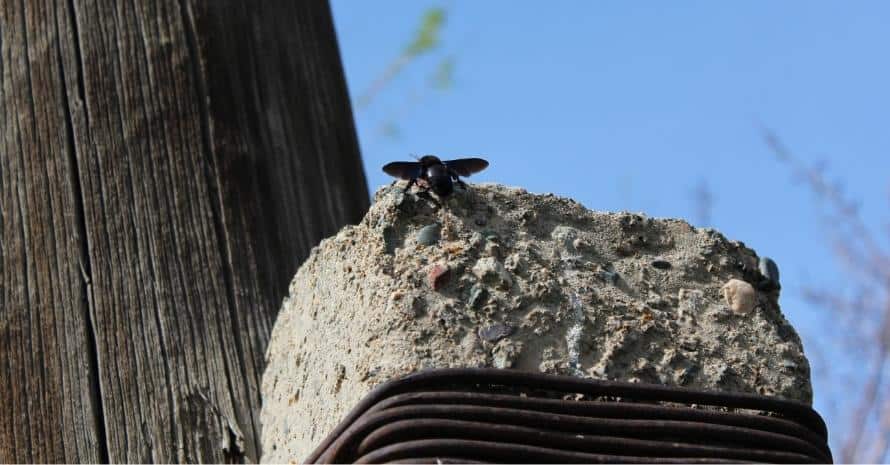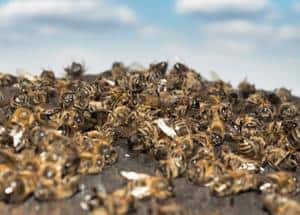Carpenter bee traps are a fairly effective, humane, cheap, and safe way to control these pesky inerts, unlike the exterminator, because they don’t involve the use of harmful chemicals or high additional costs. But what is the best carpenter bee bait to use?
I want to share with you carpenter bee lures proven by my experience and how to make them at home.
Guide on What Attracts Carpenter Bees Into the Trap

Common situation: it’s a beautiful warm summer day, you go out and see uninvited guests. Carpenter bees (Xylocopa valga) live on every continent except Antarctica. They have a body length of 12 to 25 mm.
The color is black, greenish-black, and dark blue with a metallic sheen or purple tint. The wings of these insects are black with a blue-violet sheen.
They can be quite aggressive: females sting, while males may bite. But the most unpleasant thing is the damage they do to all untreated wooden surfaces as they feed on this material.
Traps are a fairly effective bee control tool for carpenters, whether you made them yourself or bought them ready-made. In addition, many of them work quite humanely and are completely safe for children, pets and the environment. The main question is how to attract carpenter bees and what are the best lures to make the most out of your traps.
The baits that you can buy in the store sometimes contain harmful substances and are quite expensive. These are the two most common reasons why you might decide to use a homemade lure.
First of all, it is worth understanding what attracts carpenter bees. These are any smells that are reminiscent of their natural habitat or food. Such smells include wood and everything that’s sweet.
All bees, including carpenters, eat a lot of sugar. Of course, not a refined one, but a more primitive version. Believe me, they’ve got sweet tooth just like we do. Nectar is also a type of sugar.
Bees ration 100% consists of sugar and includes three of its varieties, according to studies conducted in 2012 by the American Center for Biotechnology, 24% is glucose, 21% — fructose, 55% — sucrose. What does it give us? — Understanding that sugar can really attract carpenter bees and, accordingly, the basis of our bait should be sweet.
Here are some lures I’ve tried myself:
- The first bait option is fruit or fruit puree. Sweet berries will do too. The choice here is limited only by your imagination and the fruits available. The main recommendation is that fruits should be ripe and have a pronounced smell. Several varieties can be used. For example, I tried pineapple and strawberries. For maximum effectiveness, the fruit should be finely chopped or crushed before being placed in the trap.
- Sweet syrups and jams. Any sweet syrups and jams with a bright flavor will do. For example, cherry or strawberry syrup worked pretty well for me.
- Propolis. More precisely, propolis canvas. This is the fabric that beekeepers put in the hive, and the bees soak it with propolis. It can be purchased at farm shops. The application is quite simple: you need to cut off a small piece and put it in a trap. The advantage of this bait is that it lasts quite a long time compared to the rest.
- Honey or sugar syrup. My favorite and best-performing option. Here are the instructions for how to prepare it.
Step by Step Instructions:
Let’s start preparing our bait. By itself, sugar will not attract the attention of bees, because it has no smell. Care must be taken to ensure that insects can find the bait by smell.

Therefore, there are two options for the basis for the attractant. Each of them can be used separately, without adding any additional components, or mixed. Personally, I prefer the combination and frequently add a few more ingredients to enhance the effect, but more on that later.
- The first and most common option is honey. It does not require any preliminary preparation, you can simply pour honey into the trap. It is important to keep it liquid, as it is more convenient to use and the smell is stronger, so the result will be better. If necessary, honey can be melted in a water bath.
- The second option is sugar syrup. Preparing it is quite simple. Mix equal proportions of sugar and water in a saucepan. Bring to a boil, stirring constantly, until sugar is completely dissolved. After that, let the syrup cool to room temperature. It is important not to store the syrup for a long time. It lasts up to a week if refrigerated. Unfortunately, after that, it can ferment, and such methods for extending storage as alcohol or lemon juice are not applicable, as they will scare away the bees. Therefore, it is better to prepare the syrup immediately before use.
- Next, honey and syrup must be mixed in a ratio of 3 to 1. With this consistency, the application will be as economical and convenient as possible.
- Now a little about what else can be added to our bait. For a more viscous consistency, and therefore economical use, liquid soap works well. Opt for unscented soaps, as any synthetic scents will repel insects, which we certainly don’t want. You can also use starch. A small amount will be enough, be guided by the consistency, it should not be too thick.
You can also add royal jelly and sawdust of conifers, if any. The option is selective, bee carpenters. - For example, I bought the first one in a farm shop, and the second one I got from a neighbor who sawed firewood.
- We mix all this and go to fill our traps.
Tips to Bait and Trap Carpenter Bees More Effectively:
- Use more than one trap. Apply as many traps as possible in areas where carpenter bees spawn.
- Pay particular attention to wooden objects, sunny areas, and soil near them.
- Use traps throughout the insect season. They tend to come back even a few times a season.
Treat the entrances to the trap with bait. If you just pour lure into the trap, it will not work as effectively because the stronger the smell, the better the result. - The trap must be clearly visible. Paint it, place it in a conspicuous place. It should be easy for the bees to find it.
- Make sure that children or pets do not touch the traps, this can scare away insects.
- Give the traps time. Don’t expect them to work right away. But, make sure they have fresh bait and remove dead bees regularly.
- For a faster result, fill gaps where the bees are already swarming. So, they will have to pay attention to traps in search of new housing and a source of food. You need to wait until they take off, and do not forget about safety.
FAQ

How do you exterminate carpenter bees?
Bees falling into a trap cannot get out of there and do not pose a danger because they die over time. Repeat the procedure until the complete destruction of the colony.
What to do with carpenter bees after you trap them?
Wait for the carpenter bees to die in the trap. Carefully open it and discard them, and pour fresh bait into the trap. Make sure that such bees do not stay in the trap for a long time, they scare away the rest, and the trap does not work as efficiently. Better to use gloves.
When should I spray for carpenter bees?
The spray is an effective method of repelling carpenter bees but not of fighting. Accordingly, its use is possible only a few days after the complete extermination of the colony and, preferably, the treatment of wooden surfaces.
DIY Carpenter Bee Trap Bait That Works
Carpenter bees can become a serious problem and ruin the idyll in the yard. In this article, I shared a recipe for bait that you can make at home and options for improving it.
It is based on simple and affordable ingredients, is harmless, and will effectively complement your carpenter’s bee traps. Have you tried carpenter’s bee traps yet? Prefer to buy bait or make your own? Share your experience in the comments.
Also read:
- How to Get Rid of Carpenter Bees
- How to Get Rid of Ground Bees
- How to Get Rid of Sweat Bees
- How to Keep Bees Away
- How to Keep Bees Away From Pool
- How to Get Rid of Carpenter Bees Wd40
- How Do Carpenter Bee Traps Work
References
- Wood Destroying Pest Study Guide (Utah Department of Agriculture and Food Division of Plant Industry)
https://ag.utah.gov/documents/Wood%20DestroyingPestStudyGuide.pdf - Baited Pitfall Traps (U.S. Department of Energy)
https://www.science.gov/topicpages/b/baited+pitfall+traps - Sample Pest Management Procedures for Specific Pests (Illinois Department of Public Health, Division of Environmental Health)
https://dph.illinois.gov/content/dam/soi/en/web/idph/files/publications/guidelines-pest-stratagies-041216.pdf


